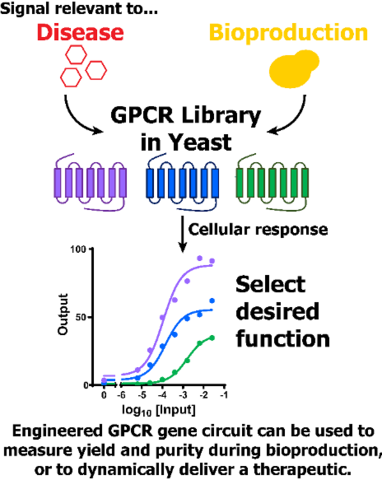Summary
We work to engineer novel function in GPCRs using a microbial platform. This enables rapid, and multi-objective engineering, to precisely characterize and tune receptor function for a desired application.
Description

A trait of all life is the ability to sense and respond to changing environments, and the largest family of eukaryotic proteins that sense and respond to extracellular signals are called G Protein-Coupled Receptors (GPCRs).
In humans, over 800 GPCRs detect a wide range of biological and chemical signals, including signals indicative of disease, and high-value chemicals such as pharmaceuticals, flavors, and fragrances.
GPCR-based gene circuits can therefore be used to sense and respond to a wide range of medically and industrially relevant molecules.
However, natural GPCRs often respond to a wide range of signals, not only the desired molecule. In addition, the efficacy (maximum downstream response) and potency (sensitivity) of the activated receptor is not optimized for the sensing goal.
We work to engineer novel function in GPCRs using a microbial platform. This enables rapid, and multi-objective engineering, to precisely characterize and tune receptor function for a desired application.

